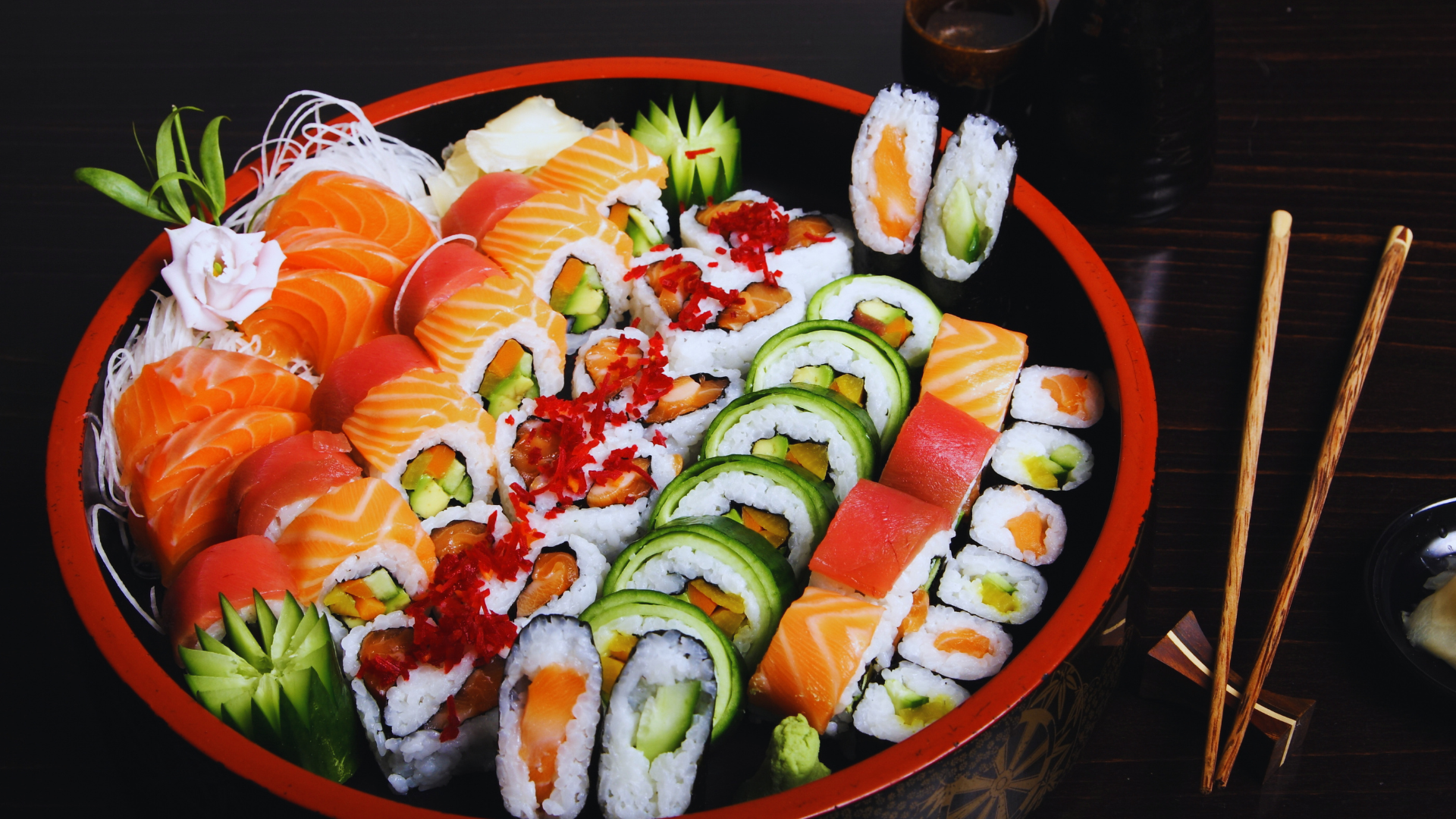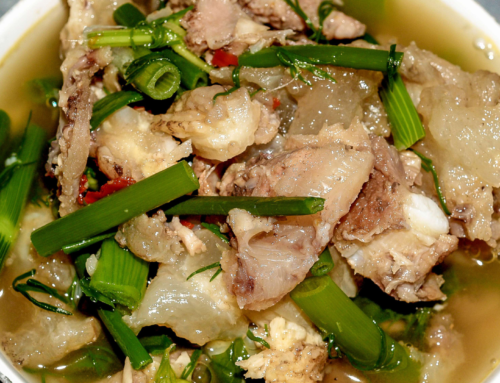Sushi is a popular and versatile dish that many people enjoy, but making it at home can feel intimidating. To make sushi, one needs only a few key ingredients: sushi rice, nori (seaweed), fresh fish or vegetables, and a simple rolling technique. With the right tools and instructions, anyone can create delicious sushi rolls tailored to their taste.
Understanding the essentials of sushi preparation transforms the cooking experience. The art of sushi lies in balancing flavors and textures, allowing for culinary creativity. From classic California rolls to innovative vegetarian options, the possibilities are endless.
In this guide, readers will discover step-by-step methods for preparing sushi at home. By following these techniques, they can impress family and friends with homemade sushi that rivals their favorite restaurant.
Essentials of Sushi Making
Understanding the core components of sushi-making enhances the experience. Key factors include selecting high-quality ingredients, properly preparing sushi rice, and knowing different sushi types.
Choosing the Right Ingredients
The freshness and quality of ingredients directly impact the sushi’s flavor. Sushi-grade fish is essential for safety and taste. Popular choices include tuna, salmon, and yellowtail.
Other key ingredients include:
- Sushi rice: Short-grain Japanese rice is preferred for its sticky texture, making it easy to form.
- Nori sheets: Seaweed is used to wrap sushi; opt for high-quality nori for the best flavor.
- Condiments: Wasabi, soy sauce, and pickled ginger enhance the dish. Consistency in quality ensures a balanced taste.
Choosing fresh, high-quality components is vital for excellent sushi.
Preparing Sushi Rice
Sushi rice preparation is critical to achieving the right texture and flavor. Start with Japanese short-grain rice. Rinse it under cold water until the water runs clear to remove excess starch.
The cooking process involves using a rice cooker or stovetop.
- Ratio: Typically, 1 cup of rice to 1.2 cups of water works well.
- Vinegar mixture: Combine rice vinegar, sugar, and salt. Gently fold this into the cooked rice after cooling.
The final texture should be sticky yet individual grains should remain intact.
Understanding Sushi Types
Sushi has various types, each with unique preparation methods. Familiarity with these helps in making diverse sushi at home.
Common types include:
- Nigiri: Hand-formed rice topped with fish or seafood.
- Maki: Rolled sushi that includes nori, rice, and fillings, typically sliced into pieces.
- Uramaki: Inside-out rolls where the rice is on the outside.
- Sashimi: While not technically sushi, it features sliced raw fish served without rice.
Each type requires a specific approach, contributing to the rich variety in sushi recipes.
Assembly Techniques
The assembly of sushi requires precision and technique to create visually appealing and delicious items. Understanding the specific methods for rolling, crafting, and creating specialty rolls is essential for making quality sushi.
Rolling Maki and Uramaki
Maki sushi is rolled with rice on the outside and fillings on the inside, while uramaki has rice on the inside and nori on the outside. Using a bamboo mat (makisu) is crucial for achieving a tight roll. To assemble maki, lay a sheet of nori on the mat, spread a thin layer of sushi rice, and top with chosen fillings. It’s essential to leave a strip of nori at the top for sealing. For uramaki, place the rice on plastic wrap, flip it over, and add fillings before rolling it tightly with the bamboo mat.
A sharp knife is necessary for slicing the rolls cleanly. Cutting through the center ensures even portions and a neat appearance. For a California roll, include avocado and crab, while a spicy tuna roll uses spicy tuna and cucumber.
Crafting Nigiri and Sashimi
Nigiri sushi consists of a mound of rice topped with a slice of fish or seafood. Sushi rice should be lightly molded with hands, ensuring it’s sticky enough to hold. A piece of sashimi is simply sliced raw fish, served without rice.
To make nigiri, press a small ball of rice in the palm with just enough pressure to shape it without crushing. Place a slice of fish on top, using a dab of wasabi for added flavor. Sashimi requires a sharp knife to slice fish cleanly, maintaining the integrity of the texture. Fresh fish choices vary from tuna to salmon. It’s critical to use fish rated for raw consumption.
Creating Specialty Rolls
Specialty rolls often combine various ingredients and flavors, showcasing creativity. Popular options include tiger rolls, Philadelphia rolls, and dragon rolls. These require more intricate layering and presentation.
To make a tiger roll, use shrimp tempura, avocado, and spicy mayo. The tempura adds a crunchy texture, while avocado balances the flavors. A Philadelphia roll features smoked salmon and cream cheese, enhancing richness.
Each roll may be topped with sauces, sesame seeds, or even sliced fish. Presentation is vital; arranging the rolls attractively on a plate enhances the dining experience. Using vibrant toppings and edible garnishes can elevate a dish significantly.
Perfecting Your Presentation
Presentation plays a vital role in sushi making, enhancing both the visual appeal and overall dining experience. Attention to detail can elevate a simple dish into an art form.
Garnishing and Accents
Garnishes add color and texture to sushi, making it visually enticing. Common accents include wasabi paste, which offers a bold kick, and pickled ginger (gari), used as a palate cleanser. For added flair, consider incorporating tobiko (fish roe) or julienned vegetables like cucumbers and carrots. These elements provide contrast, making the dish more appealing. Fresh herbs, such as cilantro or shiso leaves, can serve as vibrant accents.
Using small amounts of these garnishes thoughtfully prevents overwhelming the sushi’s appearance. They should complement rather than distract from the main ingredients like salmon, tuna, or crab meat.
Sushi Plating
The layout of sushi on a plate influences perception. A clean, simple plate allows the vibrant colors of the sushi to shine. The use of negative space can create balance and focus. Placing sushi in groups can encourage sharing and dining together. Common arrangements include rows or staggered patterns. Position accompaniments like soy sauce and wasabi in small bowls nearby.
Consider height and dimension; stacking pieces or using height with avocado slices can create visual interest. When plating, attention should be given to the harmony of colors, ensuring that each ingredient contributes to the overall aesthetic.
Complementary Sides and Pairings
Sushi can be enhanced with various sides and pairings that complement its flavors.
Pickled Ginger (Gari)
Served alongside sushi, pickled ginger offers a refreshing palate cleanser. Diners use it between different types of sushi to enhance the tasting experience.
Soy Sauce
A staple condiment for sushi, soy sauce adds saltiness. It can be used for dipping, enhancing the umami flavor of the fish.
Wasabi
Often served as a green paste, wasabi brings heat and spiciness. It can be mixed with soy sauce for a spicy dipping sauce.
Japanese Mayo
This creamy condiment is a great addition to sushi rolls, especially those with seafood. It adds richness and a slightly sweet flavor.
Sriracha
For those who enjoy the heat, Sriracha can add a bold kick. It is often drizzled over sushi rolls or served on the side for dipping.
Daikon Radish
This crunchy vegetable can be served as a side salad or pickled. Its mild flavor balances the richness of sushi.
Salad
A simple cabbage or seaweed salad pairs well with sushi. It provides a refreshing contrast and adds texture to the meal.
Miso Soup
A warm bowl of miso soup is a traditional side of sushi. The savory broth complements the freshness of the sushi.
Sake
This Japanese rice wine is a classic beverage pairing. It enhances the meal’s flavors and adds an authentic touch.





Leave A Comment